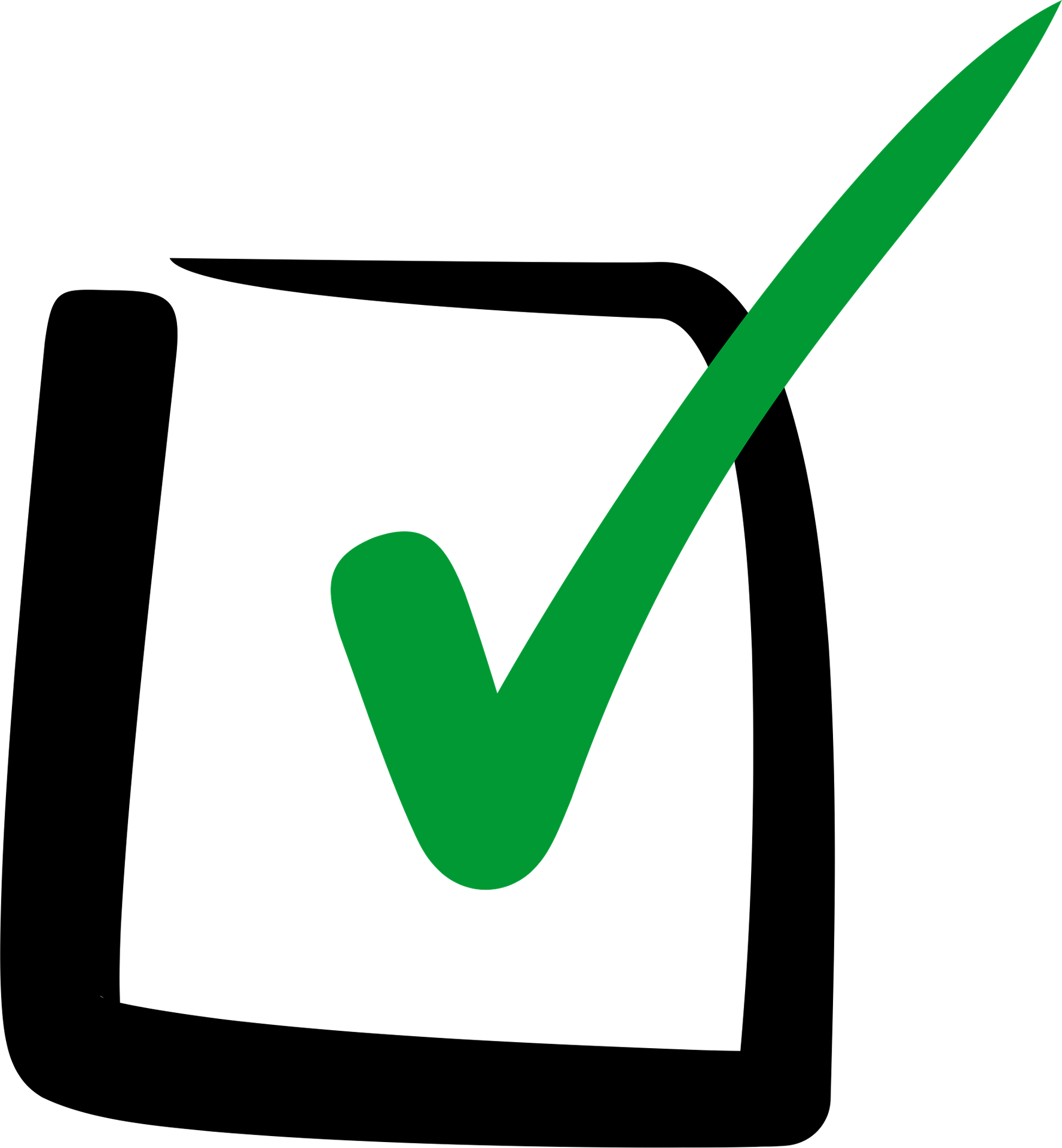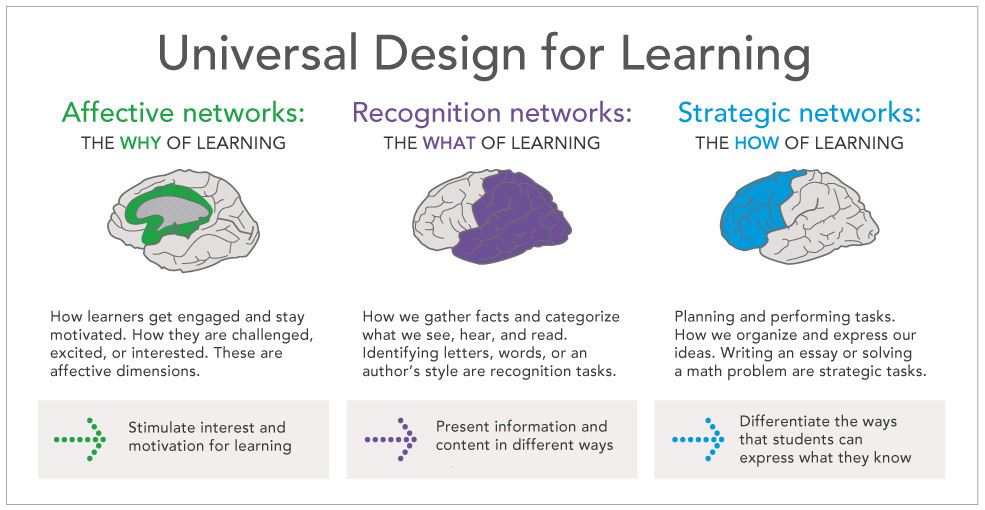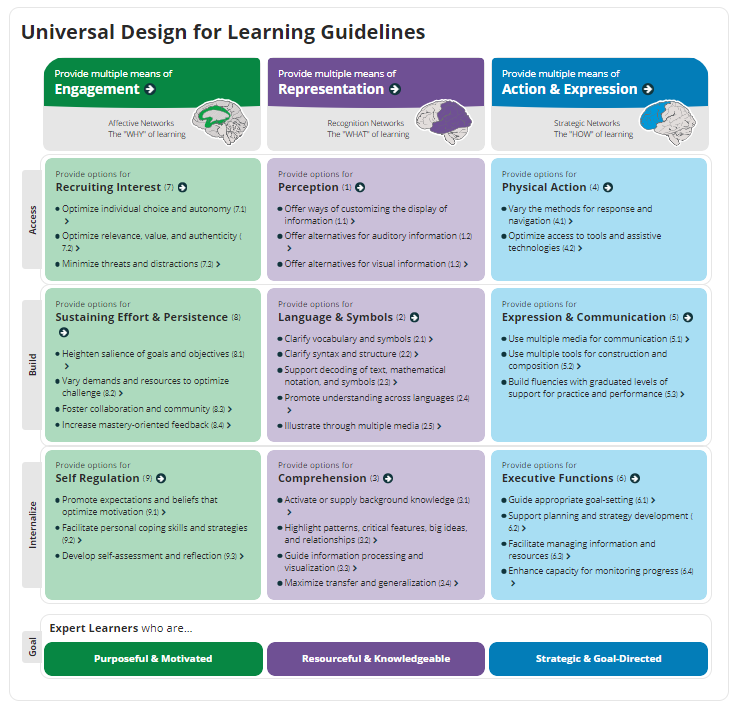Begin the "Define" section by reflecting on what you know and want to know about this "Thing."
It is now understood that there is no average student; educators must acknowledge and plan for learner variability and foster students’ journeys to becoming expert learners. Creating flexible learning methods, materials, and learning environments will eliminate potential barriers for all learners. In this "Thing," you will learn how the Universal Design for Learning (UDL) framework can assist you to achieve these goals through your instructional design.
Learning Objectives
Click on each title below to see detailed information.
To begin, please watch this video from CAST to get an overall view of UDL and it's three principals - Engagement, Representation and Action & Expression. Select the video below to view/listen.
“Universal Design for Learning (UDL) is a way of thinking about teaching and learning that helps give all students an equal opportunity to succeed. This approach offers flexibility in the ways students access material, engage with it and show what they know. Developing lesson plans this way helps all students, but especially helpful for those with learning and thinking differences.” (Amanda Morin - What is Universal Design for Learning (UDL)?)
UDL is applied before instruction, and it focuses on designing for all rather than individual students.
Now that you have an understanding of UDL, move on to the next section - Planning for Learner Variability and Minimizing Barriers

Now that you have an understanding of UDL and DI, move on to the next section - UDL Framework.
Learner Variability
Classrooms are filled with diverse learners. Students with varying interests, perception, learning strengths, language ability, and motivation are a part of every teacher's classroom.
Given this diversity, several questions come to mind:
- How can we recognize and plan for diversity in our classrooms?
- How can we effectively deliver instruction to diverse groups of students from a variety of cultures with varying languages, learning styles, abilities and disabilities?
- How do you anticipate and minimize barriers?
Educators must embrace the idea of learner variability in order to design instruction for ALL students. An understanding of learner variability will allow educators to use UDL principles to design ways for all students to engage, understand and respond in more meaningful ways and become expert learners
A basic concept of Universal Design for Learning is the concept of neuro-variability. This is important for educators, because it reminds us that learners do not have an isolated learning “style”, but instead rely on many parts of the brain working together to function within a given context. There is no single way a brain will perceive, engage with, or execute a task. Variability is not just an important consideration for thinking about differences between students, but also within students in different contexts.” (CAST, 2018) Neuroscience maintains that learning has three broad networks as depicted in the graphic below.
- Affective Network > Engagement / Caring & Prioritizing > “Why” of learning
- Recognition Network > Representation > “What” of learning
- Strategic Network >Action & Expression / Skills & Strategies > “How” of learning
An effective curriculum supports the use of all three networks.


© 2014. CAST, Inc. Used with permission. All rights reserved. Source: Meyer, A., Rose, D.H., & Gordon, D. (2014).
Universal Design for Learning: Theory & Practice. Wakefield, MA: CAST Professional Publishing.
Read more in UDL and the Learning Brain, and/or view the recorded webinar, "UDL and Learner Varibility: Using both Frameworks to Design Classrooms so Each Learner Meets Their Potential."
In order to address learner variability, educators can design instructional opportunities and environments with the most challenges in mind. The is referred to at times, as teaching to the margins. This Shelley Moore video uses a bowling analogy to explain the concept of learner variability and teaching to the margins.
Identifying and Minimizing Barriers to Learning
The first step to teaching to the margins is to identify the learning goal. When the educator determines the intended learning target, the next step is to brainstorm the multitude of pathways that will lead to students achieving the learning goal. Giving flexibility in the lesson design anticipates barriers, builds in supports and resources, and allows for increased possibilities for student success.
![]()
Now that you have an understanding of Planning for Learner Variability and Minimizing Barriers move on to the next section - Fostering Expert Learning.
The goal of UDL implementation is to create expert learners. UDL defines expert learners as those who are
- purposeful and motivated,
- resourceful and knowledgeable,
- and strategic and goal-directed.
To foster the growth of expert learners, teachers must understand that there is learner variability in all learners; each learns differently with different abilities, preferences and are impacted by the context and environment.
Brain regions and the Expert Learner © 2014. CAST, Inc. Used with permission. All rights reserved. Source: Meyer, A., Rose, D.H., & Gordon, D. (2014). Universal Design for Learning: Theory & Practice. Wakefield, MA: CAST Professional Publishing.
In this video from the UDL-IRN, you will be introduced to the goal of implementing the UDL framework, developing expert learners.

Now that you have an understanding of how to support multiple means of engagement, move on to the next section - Technology to Support Multiple Means of Representation.
UDL Guidelines
The UDL guidelines are aligned with the learning brain networks and based on three main principles: engagement, representation, and action and expression. The UDL Guidelines provide a tool used in the implementation of Universal Design for Learning to improve and optimize teaching and learning for all people based on scientific insights into how humans learn.
Click on the image below to be redirected to the interactive chart, or make a copy of the PDF.

© 2014. CAST, Inc. Used with permission. All rights reserved.
Source: Meyer, A., Rose, D.H., & Gordon, D. (2014). Universal Design for Learning: Theory & Practice. Wakefield, MA: CAST Professional Publish
Multiple Means of Engagement
This principle of engagement provides a variety of ways to gain learner interest, motivation and self regulation. Engagement is central to student learning. For many students, using technology in itself increases engagement. The ability to manipulate text without recopying, the ability to record audio, video, insert pictures, develop presentations, etc. can provide motivation to many students.
Engagement in action in Scott Duncan’s high school classroom:
Multiple Means of Representation
This principle of representation provides a variety of ways for learners to access information and learning. Offering choices in the means or method which an assignment is completed is a key concept in UDL. Technology offers many ways to provide alternate ways to both gain information and express knowledge.
Representation in action in the 5th grade classroom of Kathy Denniston:
Multiple Means of Action and Expression
“Learners differ in the ways that they can navigate a learning environment and express what they know. For example, individuals with significant movement impairments (e.g., cerebral palsy), those who struggle with strategic and organizational abilities (executive function disorders), those who have language barriers, and so forth approach learning tasks very differently. Some may be able to express themselves well in written text but not speech, and vice versa. It should also be recognized that action and expression require a great deal of strategy, practice, and organization, and this is another area in which learners can differ. In reality, there is not one means of action and expression that will be optimal for all learners; providing options for action and expression is essential. “ CAST
Technology provides an awesome array of opportunities to increase options in which an individual can express his/her knowledge. Current media tools provide a more flexible and accessible toolkit with which learners can successfully take part in their learning and demonstrate what they know.
Allowing the use of a variety of options including text, speech, drawing, illustration, comics, storyboards, design, film, music, dance/movement, visual art, sculpture, or video as well as a wide range of options for communicating allows students to use a tool that enhances their strengths and preferences.
Action & Expression in action in a second grade classroom of Amber Elwood:
© 2014. CAST, Inc. Used with permission. All rights reserved.
Source: Meyer, A., Rose, D.H., & Gordon, D. (2014). Universal Design for Learning: Theory & Practice. Wakefield, MA: CAST Professional Publishing.

Now that you have an understanding of the UDL guidelines, move on to the next section - Applying UDL to the Learning Environment.
The Critical Elements of UDL-Aligned Instruction
- Clear Goals
- Intentional Planning for Learner Variability
- Flexible Methods of Materials
- Timely Progress Monitoring
Read more about the UDL critical elements in the following resource:
Considerations for UDL in the Learning Environment
- Design the space to match the goal
- Offer resource areas accessible to all
- Integrate digital resources and materials
- Highlight the learning processes in the environment
- Ensure access to target goals in the learning environment
Read more at Top 5 UDL Tips for Learning Environments
This is the last section of this "Thing's" Define playlist. Now would be a great time to revisit your Reflection Document and think about what you learned in this "Thing." In addition, complete the Knowledge Check and capture a screenshot of your results to post in your Reflection Document.
As you move forward, consider the following: How might you use this in your own professional practice? What goals might you set for yourself, including activities, timelines, and evaluation? What connections did you make to the ISTE Standards or your own content area standards? How will you monitor your own progress towards these goals? Then proceed to the next section.